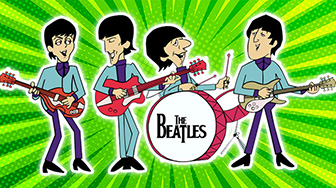Top Songs in Spanish 2023

Tags: Music
| # | Search Volume | ||
|---|---|---|---|
| 1 |
D
|
5.0M | |
| 2 |
D
|
3.3M | |
| 3 |
G
|
2.7M | |
| 4 |
M
|
2.2M | |
| 5 |
L
|
2.2M | |
| 6 |
B
|
1.8M | |
| 7 |
A
|
1.2M | |
| 8 |
C
|
823.0K | |
| 9 |
L
|
673.0K | |
| 10 |
A
|
673.0K | |
| 11 |
O
|
673.0K | |
| 12 |
B
|
673.0K | |
| 13 |
M
|
550.0K | |
| 14 |
E
|
450.0K | |
| 15 |
B
|
450.0K | |
| 16 |
S
|
368.0K | |
| 17 |
S
|
368.0K | |
| 18 |
B
|
301.0K | |
| 19 |
V
|
301.0K | |
| 20 |
L
|
301.0K | |
| 21 |
P
|
246.0K | |
| 22 |
L
|
246.0K | |
| 23 |
L
|
165.0K | |
| 24 |
D
|
165.0K | |
| 25 |
É
|
135.0K | |
| 26 |
V
|
135.0K | |
| 27 |
O
|
110.0K | |
| 28 |
A
|
110.0K | |
| 29 |
U
|
90.5K | |
| 30 |
E
|
74.0K | |
| 31 |
M
|
60.5K | |
The world of music is constantly evolving, and the internet has made it easier than ever for people to discover new artists and songs from around the globe. With the rise of online platforms such as Google, music has become more accessible to people than ever before. In this research study, we delve into the most popular Spanish songs on Google in different countries, including America (US), United Kingdom (UK), Canada, Australia and India.
The Spanish language has a rich musical tradition that has captivated audiences worldwide, from the lively rhythms of salsa and merengue to the romantic ballads of bolero and flamenco. This study explores the preferences of people from different cultures, providing insights into the most searched Spanish songs in different countries.
We analyze the data collected from Google to understand the factors that influence the popularity of Spanish songs in different regions. This research study sheds light on the influence of music on culture and how the internet has transformed the way people discover and consume music.
Overall, this study provides a comprehensive understanding of the global appeal of Spanish music and its impact on different cultures. It is our hope that the findings of this study will contribute to the growing body of knowledge about the intersection of music and technology and provide insights into the changing nature of cultural consumption in the digital age.



